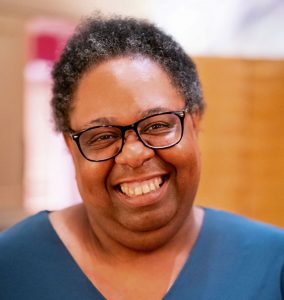
After more than 35 years of operation, TBI is closing its doors and our website will no longer be updated daily. Thank you for all of your support.
Diversity: Offering the right kind of support
 In the latest instalment of her monthly column, the Creative Diversity Network’s executive director Deborah Williams discusses how to be a good ally in the world of diversity.
In the latest instalment of her monthly column, the Creative Diversity Network’s executive director Deborah Williams discusses how to be a good ally in the world of diversity.
I have to admit I’ve struggled immensely with the fallout of this summer. It has finally hit me that this is the new way of living and being for a heck of a long time to come.
Locked in my house for eight months and not leaving it for more than 15 minutes every six weeks. Being judged unfairly because I wasn’t able to be outside and joining the Black Lives Matter protests. The assumption that because you’re working at home and shielding you don’t have an excuse to not respond immediately to people’s emails and requests for support or information.
It’s hit me hard and I realised I had to ask for help, I needed to reach out and say: ‘it’s too much now’. And it brought my mind to support systems. In work, I guess we call it allyship.
I have been wanting to talk about allyship for a long time because I think it is really, really important in the world of diversity. It’s one of those words that many people use without properly understanding, and I’m not sure why. Maybe it’s because the notion of an ally has not been codified or stress tested in our workspaces in relation to diversity – and particularly because people can sit within multiple under-represented groups and those seeking to offer support are unsure as to how to make the initial approach.
I wonder about this sort of allyship: corporate activity. It’s genuinely meant – like a public display of affection – there for all to see. But what does it actually achieve?
Experience has taught me that there are three frames for allyship. If they work and are suitable for the needs of business and our industry globally, I couldn’t say for sure, but I do believe they are a good place to start. These stories are examples of the three that I hope will spark discussion and conversation about how allies in a global industry like ours are best placed to enable diversity, not hinder it.
Last year I participated in a conference, where somebody relayed remarks to me that were made about me at another event by an industry figure who claimed that “lynching wasn’t a black thing”, and that I had no right to challenge white, male academics who were far more intelligent than me.
I took it on the chin because I am used to this way of people behaving. It was disappointing, I wish it hadn’t happened, but I had a lot of work to do so I moved on.
This month the person who related that story called out that same industry figure in a public space. It was a small, but wonderful act of allyship that she had agonised over for almost a year – weighing up the impact on me, but more, it had stayed with her for so long and clearly it had a critical impact on her. I call this form of allyship giving not receiving.
Moving on to the second space where allyship came into being: over the summer. Many corporate and public organisations decided that “Black Lives Matter” and that they would put black boxes on their digital and physical spaces. It became a bit like the use of rainbows to demonstrate allyship with Pride and LGBTQ+ communities around the world. There were statements of intent and commitments to making changes and doings things differently. Their support for their black staff and employees was amplified by this action.
But I wonder about this second sort of allyship: corporate activity. It’s genuinely meant – like a public display of affection – there for all to see. But what does it actually achieve in terms of allyship for individuals who are being oppressed?
A third form of allyship is giving space to – and empowering – individuals who identify within particular groups to speak for themselves, rather than trying to speak on their behalf, even if it’s with the best of intentions. Speaking personally, I sit in multiple oppressed groups. I don’t want to be identified by other people as being part of, or representing, just one group.
For example, when somebody says they want to have a conversation about trans issues, my response is to find the right people to advocate for change from within these groups rather than articulating a blanket ideological response that misses out the nuance and the deeper understanding of this area of diversity which can only come from those with the actual lived experience.
As an ally, I don’t need to speak for others, it’s my job to do what I can. And that is to give them space, time and money to ensure that they are empowered and enabled to participate and have their voices heard and their ideas and expertise acted upon.
As an ally, I don’t need to speak for others, it’s my job to do what I can.
That doesn’t mean I won’t challenge some of these same people about their other prejudices – for example the continuing under-representation of black gay men within the discourse around pride and international gay achievements over the last 50 years.
But for me, allyship should never be just about the person who is trying to be an ally. The more it is, the less it is about transformative and structural change which needs to happen. Change more often takes place when you are in forced into your discomfort zone. Worrying and unsure of what is going to come next.
My belief in allyship is real. It’s a belief that allyship means ensuring change works for everyone, whatever their background. Being an ally is much more important than not being an ally, but being a good ally means remembering it is about us, not you.
Deborah is executive director at the UK’s Creative Diversity Network and has worked in arts, culture and the creative industries for more than three decades.


